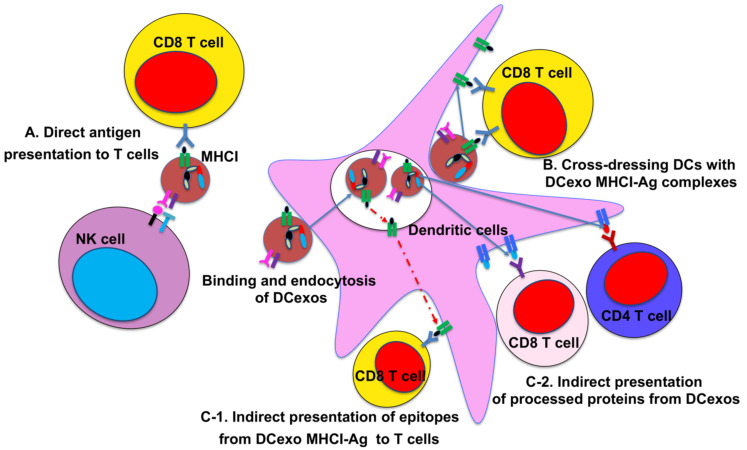Figure 2.
DCexo-mediated antigen presentation to activate T cells. (A): The presence of MHCExo-Ag complexes on the surface of DCexos enables them to activate antigen-specific CD4 and CD8 T cells directly. Only MHCI and CD8 T cells are illustrated. NK cell-expressed ligands (NKG2D-L, IL-15R and BAG6) on DCexos can also activate natural killer (NK) cells directly. (B–C): DCexos activate antigen-specific T cells more efficiently indirectly via bystander DCs. (B): DCexos can transfer MHCExo-Ag complexes to the DC plasma membrane, a process termed cross-dressing, leading to activation of antigen-specific T cells. MHC of DCexos and T cells has to be the same while MHC of the bystander DCs is not required. DCexos can also transfer MHCExo-Ag complexes to tumor cells to be presented to host T cells (not depicted). (C): After internalization, (C-1) DCexos could transfer antigenic peptides to the MHCDC in bystander DCs. The pMHCDC complexes could be transported to the DC plasma membrane to be presented to T cells. DCexos, bystander DCs and T cells are required to have the same MHC in this mode. (C-2) Protein antigens carried by DCexos could be processed by bystander DCs, and multiple and different epitopes for both CD4 and CD8 T cells could be presented on MHC of bystander DCs. Only bystander DCs and T cells need to have the same MHC, allowing DCexos to induce allogeneic T cell responses.

